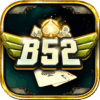In the realm of online card games, players often seek intellectually stimulating and strategically challenging experiences. However, finding a game that offers such depth can be a daunting task, especially when it comes to Bridge. With a multitude of online platforms and apps claiming to provide the ultimate Bridge experience, players may face difficulties in choosing the right platform that aligns with their preferences and skill levels. Additionally, understanding the intricate rules and strategies of Bridge can pose a significant hurdle for newcomers to the game.
Imagine spending hours searching for an online Bridge platform, only to end up frustrated by limited features or a lack of active players. Furthermore, struggling to grasp the complex bidding systems and conventions in Bridge can hinder players from fully enjoying the game’s potential. Without proper guidance and a reliable source of knowledge, players may struggle to progress and find themselves disheartened by their Bridge journey.

Fear not, as this comprehensive Bridge assessment aims to unravel the mysteries surrounding online Bridge platforms and provide valuable insights into the game’s rules and strategies. By exploring popular platforms like Bridge Base Online and Bridge 247, readers will gain a thorough understanding of the available options and their unique features. Moreover, this assessment will equip players with practical tips and tactics to enhance their gameplay and partnership coordination. Get ready to embark on a fulfilling Bridge experience, armed with the knowledge and tools to thrive in the world of online Bridge.
I. Introduction
A. Brief overview of Bridge as a card game
What is Bridge ?
Bridge is a trick-taking card game played with a standard deck of 52 cards by four players in two partnerships. It requires strategic bidding, communication, and teamwork to fulfill the contract by winning tricks.
Bridge is a captivating card game that combines strategy, teamwork, and competition. Played with a standard deck of 52 cards by four players in two partnerships, this game offers a mentally stimulating and intellectually challenging experience.

The game consists of two main phases: bidding and playing. During the bidding phase, players communicate information about their hands to determine the final contract. This requires careful analysis and strategic decision-making.
In the playing phase, the declarer, the player who won the contract, leads the first trick, and the other players follow suit. The objective is to win the specified number of tricks agreed upon during the bidding process.
Bridge is renowned for its intricate gameplay and the need for effective partnership communication. Players must work together to exchange vital information and understand each other’s holdings. The game rewards players who can anticipate and strategize, making it a favorite among enthusiasts seeking a challenging and intellectually stimulating card game.
Whether played casually or competitively, Bridge offers endless opportunities for skill development and enjoyment. Its rich blend of strategy, tactics, and probability keeps players engaged and coming back for more.
>>> Read more: 7 Strategies for Winning at Solitaire: Master the Art of the Solo Game
B. Importance and popularity of online Bridge platforms
In recent years, online Bridge platforms have gained significant importance and popularity among card game enthusiasts. These platforms provide a convenient and accessible way for players to enjoy the game from the comfort of their homes, eliminating the need for physical gatherings or finding local Bridge clubs.

The online format allows players to connect with a vast community of Bridge enthusiasts from all around the world. This not only expands the player base but also enhances the diversity and competitiveness of the games. Online platforms often offer various game options, including casual play, tournaments, and even educational resources for beginners to learn and improve their skills.
Furthermore, online Bridge platforms offer features that enhance the overall gaming experience. Players can find automated scoring, interactive tutorials, and AI opponents for practice. These platforms often include matchmaking systems that pair players of similar skill levels, ensuring fair and challenging gameplay.
The availability of online Bridge platforms also enables players to find opponents and participate in games at any time, day or night. This flexibility caters to players with busy schedules, allowing them to indulge in their passion for Bridge at their convenience.
Overall, online Bridge platforms play a vital role in promoting and sustaining the popularity of the game, providing an inclusive and immersive experience for players worldwide.
C. Purpose and scope of the review article
The purpose of this review article is to provide readers with a comprehensive understanding of the card game Bridge, particularly focusing on online Bridge platforms. It aims to serve as a valuable resource for both newcomers and experienced players who are interested in exploring and enhancing their Bridge experience in the online realm.

The scope of this review article encompasses various aspects of this game, including its rules, strategies, and the online platforms available for playing the game. It delves into the intricacies of Bridge gameplay, such as the bidding and playing phases, while also discussing the importance of partnership communication and coordination.
Additionally, this review article evaluates and compares popular online Bridge platforms, such as Bridge Base Online and Bridge 247, providing insights into their features, user experience, and community aspects. It also addresses the benefits and challenges of playing Bridge online, shedding light on the advantages of accessibility and convenience, as well as potential concerns regarding communication and fair play.
Ultimately, this review article aims to equip readers with the necessary knowledge and guidance to make informed decisions about their online Bridge endeavors, while also fostering a deeper appreciation for the intellectual and strategic aspects of the game.
>>> Tips: The Art of Bluffing in Rummy: Strategies for Misleading Your Opponents
II. Understanding Bridge: The Basics and Rules
A. Explanation of the objective and gameplay of Bridge
The objective of this game is for partnerships to score points by bidding and successfully fulfilling the contracted number of tricks. The game revolves around teamwork, communication, and strategic decision-making. Here’s a breakdown of the gameplay and objectives:
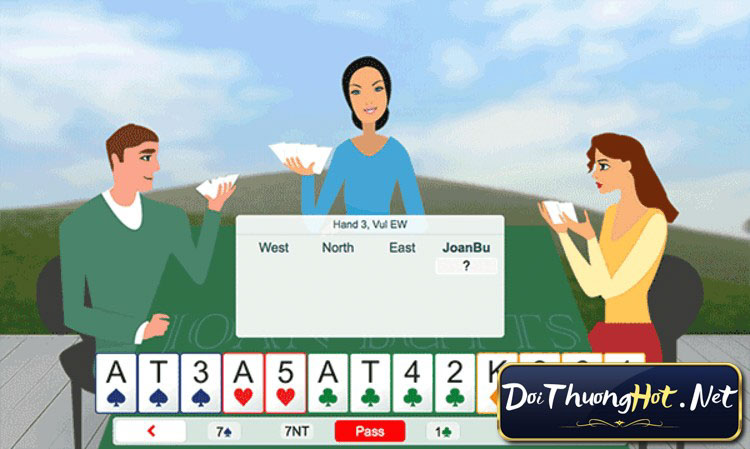
- Four players form two partnerships, with partners sitting opposite each other.
- The game is played with a standard deck of 52 cards.
- The bidding phase is where players communicate information about their hands, indicating the number of tricks they expect to win and the suit or no-trump contract.
- Bidding progresses clockwise, with each player having a chance to bid or pass. The highest bid becomes the final contract.
- The player who bid the final contract becomes the declarer, while the opposing partnership becomes the defenders.
- The declarer’s objective is to win the number of tricks specified in the contract. The defenders aim to prevent the declarer from reaching the contract.
- The play begins with the player to the left of the declarer leading the first trick, and other players following suit if possible. The highest-ranking card of the led suit wins the trick.
- The winning player of each trick leads the next one until all 13 tricks have been played.
- Scoring depends on whether the declarer successfully fulfills the contract, with bonuses awarded for overtricks or penalties incurred for undertricks.
Bridge emphasizes partnership cooperation, where players exchange information through bidding and employ strategies to maximize their chances of meeting the contract. Effective communication and understanding of partner’s signals and bidding conventions are crucial for success in Bridge. The game’s complexity and depth make it a favorite among those seeking an intellectually challenging and rewarding card game experience.
B. Overview of the bidding phase and its significance
The bidding phase in this game is a crucial aspect of the game that sets the foundation for the contract and gameplay strategy. It involves players communicating information about their hands through a series of bids, which determine the final contract for the hand.
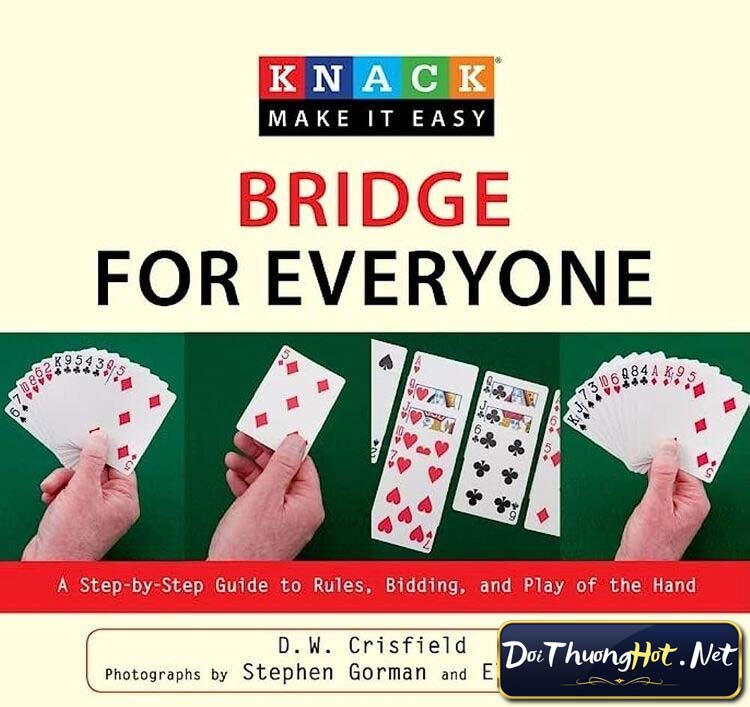
During bidding, players assess the strength of their hand, considering factors like high-card points, distribution, and the presence of long suits or voids. They use bidding conventions and systems to convey information to their partner about the nature of their hand, such as its strength, suit preferences, or specific features like balanced or unbalanced distributions.
The significance of the bidding phase lies in its ability to establish the partnership’s objectives for the hand and provide valuable information about the combined strength and distribution of the two hands. The bidding not only determines the number of tricks the partnership aims to win but also specifies the trump suit or the no-trump contract.
A successful bidding phase requires effective communication, trust, and understanding between partners. It sets the stage for the subsequent playing phase, where players will strive to fulfill the contract by winning the specified number of tricks. The bidding phase serves as the bridge between the initial distribution of cards and the strategic gameplay, making it a critical element in the overall strategy and success of a Bridge hand.
C. Description of the playing phase and trick-taking mechanics
The playing phase of this game is where the strategies and tactics discussed during the bidding phase come into action. It involves players attempting to win tricks by playing cards from their hands and following specific rules and conventions.
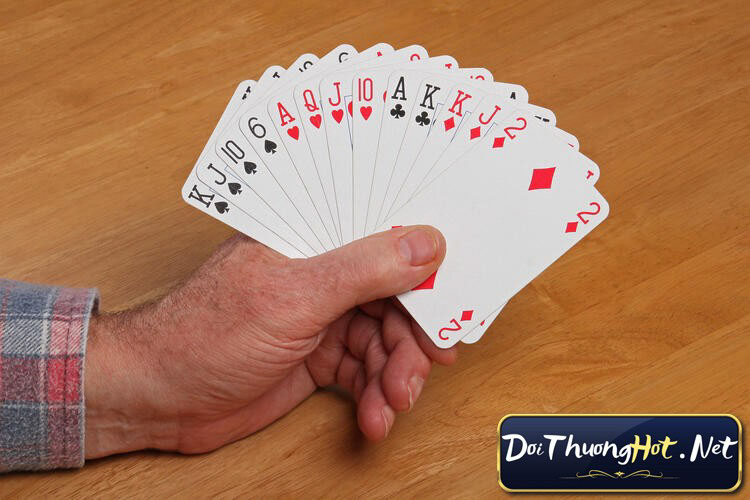
The play begins with the player to the left of the declarer leading the first trick by playing a card from their hand. The other players, in turn, play a card of the same suit if they have one. If they don’t have a card of the led suit, they can play a card from a different suit or a trump card if a trump suit was established during bidding.
The trick is won by the player who plays the highest-ranking card of the led suit, and that player becomes the leader of the next trick. The winning player collects the trick and places it face down in front of them.
The process continues until all 13 tricks have been played. The declarer aims to win the specified number of tricks required to fulfill the contract, while the defenders strive to prevent the declarer from doing so.
Trick-taking mechanics are essential in the playing phase, as players strategically choose which cards to play, considering factors like card ranking, the suit led, and knowledge gained from previous plays. Understanding opponents’ patterns and maintaining control over the trump suit are critical for success.
The playing phase requires players to carefully manage their cards, assess the strength of their opponents’ hands, and adapt their strategies as the hand progresses. It’s an intricate dance of playing the right cards at the right time and making calculated moves to achieve the desired outcome.
D. Discussion on scoring and contract fulfillment
Scoring and contract fulfillment are essential elements of Bridge that determine the outcome of a hand and overall game. Scoring in this game is based on the successful fulfillment or failure to meet the contracted number of tricks. The partnership that fulfills the contract receives points, while the opponents score penalties for preventing the contract’s fulfillment.
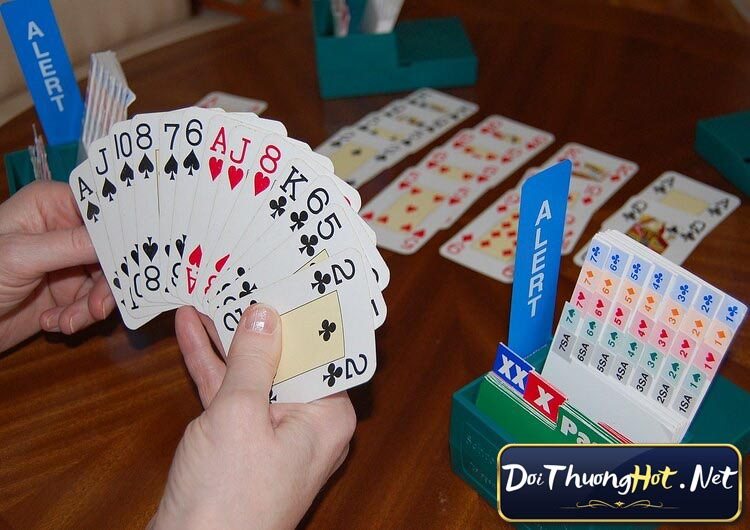
The basic scoring structure in this game involves awarding points for each trick won beyond the contracted number (overtricks) and penalizing the declarer for failing to meet the contract (undertricks). Additionally, there are bonus points awarded for bidding and making specific contracts, such as bidding and winning a game or a slam.
The scoring system encourages risk-taking and rewards accuracy in bidding and play. It adds an extra layer of strategy, as players must balance the desire to fulfill their contract against the potential rewards or penalties.
Contract fulfillment is the primary objective in this game. The declarer aims to win the number of tricks specified in the contract, while the defenders try to prevent this. Fulfilling the contract not only earns points but also provides advantages in subsequent deals, such as vulnerability status and bidding opportunities.
Understanding the scoring system and managing contract fulfillment is crucial for successful play in this game. It requires strategic decision-making, accurate bidding, precise play, and tactical maneuvers to maximize points and minimize penalties. The interplay between scoring and contract fulfillment adds depth and excitement to the game, making each hand a strategic challenge.
III. Exploring Online Bridge Platforms
A. Introduction to online Bridge platforms
Online Bridge platforms have revolutionized the way players engage with the game, providing a convenient and accessible avenue for enthusiasts to enjoy this game from anywhere in the world. These platforms offer virtual environments where players can connect, compete, and improve their skills.

Online Bridge platforms offer a range of features and game options. Players can find casual games for leisurely play, competitive tournaments for testing their skills, and even practice modes with AI opponents for honing their strategies. The platforms often provide interactive tutorials and resources for beginners to learn the rules and conventions of this game.
One of the significant advantages of online Bridge platforms is the ability to connect with a diverse and global community of players. This expands the pool of potential opponents, fostering competition and enhancing the overall gameplay experience. Players can interact through chat features, establish partnerships, and participate in online forums to discuss strategies and share insights.
Furthermore, online Bridge platforms offer the flexibility of playing at any time, according to players’ schedules. They eliminate the constraints of physical locations and time zones, allowing players to engage in Bridge whenever they desire. This accessibility has contributed to the growing popularity of online Bridge platforms among both casual players and dedicated enthusiasts.
Overall, online Bridge platforms provide a dynamic and immersive experience, enabling players to indulge in their passion for this game, connect with fellow players, and elevate their gameplay skills in a convenient and flexible manner.
B. Overview of Bridge Base Online (BBO) as a prominent platform
Bridge Base Online (BBO) is widely recognized as one of the most prominent and popular online platforms for playing this game. Here is an overview of its key features and why it stands out:
Link to play BBO

- BBO offers a vast and active community of Bridge players from around the world, providing a vibrant and competitive environment for players to connect, socialize, and challenge themselves.
- The platform supports a variety of game types, including casual play, tournaments, team matches, and even special events, catering to players of all skill levels and preferences.
- BBO’s user-friendly interface and intuitive design make it accessible to both beginners and experienced players, allowing for smooth navigation and an enjoyable playing experience.
- It offers various features to enhance gameplay, such as customizable bidding systems, hand analysis tools, and real-time scoring. These features contribute to players’ growth and understanding of the game.
- BBO incorporates sophisticated matchmaking algorithms, ensuring fair and balanced competition by pairing players with similar skill levels.
- The platform supports partnership features, allowing players to connect with friends or find new partners for collaborative play.
- BBO’s extensive range of teaching resources, including lessons, articles, and interactive tutorials, makes it an excellent platform for learning and improving Bridge skills.
- The ability to play Bridge anytime, anywhere, and across different devices, including computers, tablets, and smartphones, adds to the convenience and accessibility of BBO.
Overall, Bridge Base Online stands out as a leading online platform due to its thriving community, diverse game options, user-friendly interface, and comprehensive features for both casual players and serious enthusiasts.
C. Evaluation of Bridge 247 as an online Bridge provider
Bridge 247 is an online game provider that offers a unique and enjoyable experience for this game players. Here is an analysis of its key features and strengths:
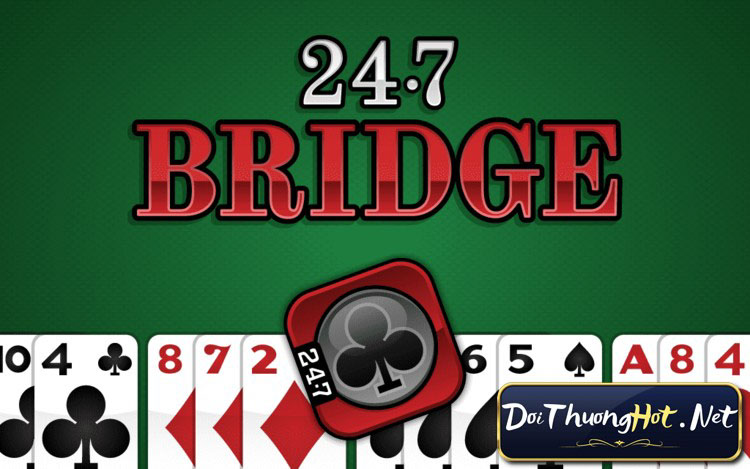
- Bridge 247 provides a user-friendly and intuitive platform, making it accessible to players of all skill levels. The interface is clean, well-organized, and easy to navigate, ensuring a smooth and enjoyable playing experience.
- The platform offers a variety of game options, including individual play, multiplayer games, and customizable table settings. This versatility allows players to choose the game mode that suits their preferences and playing style.
- Bridge 247 has a robust AI engine that provides challenging computer opponents for solo play. This feature is particularly useful for players looking to practice and improve their skills in a solo environment.
- The platform offers competitive multiplayer games, allowing players to engage with opponents from around the world. The matchmaking system ensures fair pairings, providing an opportunity for both casual and competitive play.
- Bridge 247 provides detailed scoring and analysis, allowing players to track their performance and monitor their progress over time. This feature helps players identify areas for improvement and enhances their understanding of the game.
- The platform offers a chat feature, enabling players to communicate with their partners and opponents during the game. This fosters a sense of community and facilitates social interaction among players.
- Bridge 247 is accessible across multiple devices, including computers, tablets, and smartphones, providing players with the flexibility to play anytime, anywhere.
Overall, Bridge 247 is a reliable online Bridge provider that offers a user-friendly interface, diverse game options, competitive multiplayer experiences, and helpful features for tracking progress. Whether for practice, casual play, or competitive matches, Bridge 247 caters to the needs of this game enthusiasts, contributing to an engaging and enjoyable online game experience.
D. Comparison of different online Bridge platforms (e.g., 247 Bridge, Bridge Base Online)
When comparing different online Bridge platforms like 247 Bridge and Bridge Base Online, several factors come into play. Here’s an analysis of their key features and distinctions:
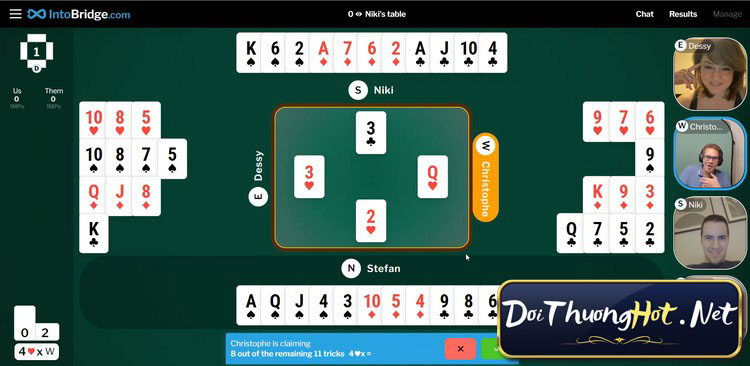
Bridge Base Online (BBO):
- BBO boasts a large and active community of Bridge players, offering a vibrant and competitive environment for players to connect and challenge themselves.
- The platform supports a variety of game types, including casual play, tournaments, and team matches, catering to players of all skill levels and preferences.
- BBO provides comprehensive teaching resources, such as lessons, articles, and interactive tutorials, making it an excellent platform for learning and improving Bridge skills.
- The platform offers customizable bidding systems, hand analysis tools, and real-time scoring, contributing to players’ growth and understanding of the game.
- BBO incorporates sophisticated matchmaking algorithms, ensuring fair competition by pairing players with similar skill levels.
- It provides partnership features, allowing players to connect with friends or find new partners for collaborative play.
247 Bridge:
- 247 Bridge offers a user-friendly interface, making it accessible to players of all skill levels. The clean and intuitive design enhances the playing experience.
- The platform provides challenging computer opponents for solo play, with a robust AI engine that adapts to players’ abilities.
- It offers multiplayer games, allowing players to engage with opponents worldwide. While the player pool may be smaller than BBO, it still provides competitive gameplay.
- 247 Bridge offers customizable table settings, allowing players to adjust game parameters to their preferences.
- The platform provides detailed scoring and analysis, helping players track their performance and improve their skills.
In summary, Bridge Base Online excels in its extensive community, diverse game options, and comprehensive teaching resources. On the other hand, 247 Bridge offers a user-friendly interface, strong AI opponents, and customizable gameplay settings. The choice between these platforms ultimately depends on individual preferences, whether players seek a larger community and teaching resources (BBO) or a straightforward and customizable playing experience (247 Bridge).
E. Discussion on the features, user experience, and community aspects of online Bridge platforms
Online Bridge platforms offer a range of features, provide a user-friendly experience, and foster a vibrant community. Here is an analysis of these aspects:
Features:
- Online Bridge platforms offer various game modes, including casual play, tournaments, and team matches, catering to different player preferences and skill levels.
- Many platforms provide customizable bidding systems, hand analysis tools, and real-time scoring, enhancing players’ understanding of the game and allowing for strategic growth.
- Some platforms incorporate AI opponents for solo play, offering challenging gameplay and the opportunity to practice and improve skills.
- Interactive tutorials, lessons, and articles are often available, providing valuable resources for learning and enhancing Bridge knowledge.
- Additional features like chat functions, customizable table settings, and detailed scoring and analysis contribute to the overall experience.
User Experience:
- Online Bridge platforms prioritize user-friendly interfaces, ensuring ease of navigation, intuitive design, and seamless gameplay.
- Accessible across various devices, including computers, tablets, and smartphones, these platforms offer flexibility and convenience for players to engage at their preferred time and location.
- Platforms often incorporate responsive customer support to address any technical issues or inquiries promptly.
Community:
- Online Bridge platforms foster a sense of community, allowing players to connect, socialize, and build relationships with fellow enthusiasts worldwide.
- Chat features, forums, and online communities provide avenues for interaction, discussion, and the exchange of ideas and strategies.
- Some platforms facilitate partnership-building, enabling players to find new partners or play with friends.
- Community-driven events, competitions, and leaderboards create a sense of camaraderie and healthy competition among players.
Overall, online Bridge platforms combine an array of features, user-friendly interfaces, and vibrant communities, providing an engaging and enjoyable experience for players. These platforms not only offer opportunities to improve this game skills but also create connections and foster a sense of belonging within the this game community.
IV. Playing Bridge Online: Benefits and Challenges
A. Advantages of playing Bridge online
Playing Bridge online offers several advantages that enhance the overall experience for players. Here are some key advantages:

- Convenience: Online Bridge allows players to enjoy the game at their convenience, eliminating the need for physical meetups and fixed schedules. Players can access online platforms from anywhere, anytime, using various devices.
- Accessibility: Online Bridge opens doors for players worldwide, offering the opportunity to connect and play with a diverse community. It broadens the pool of potential opponents and partners, providing a rich and varied gameplay experience.
- Skill Development: Online platforms often provide resources, tutorials, and practice modes that support skill development. Players can learn new strategies, practice different bidding systems, and improve their gameplay through interactive tools and analysis features.
- Flexibility: Online Bridge offers flexible game options, including casual play, tournaments, and team matches. Players can choose the type of game that suits their preferences and time availability.
- Social Interaction: Online Bridge platforms facilitate social interaction through chat features, forums, and community events. Players can connect with like-minded individuals, share experiences, and discuss strategies, fostering a sense of community and camaraderie.
- Continuous Learning: Online Bridge platforms provide a wealth of learning opportunities. Players can observe and learn from more experienced players, access educational resources, and engage in discussions to deepen their understanding of the game.
Overall, playing this game online provides convenience, accessibility, skill development opportunities, flexibility, social interaction, and continuous learning. These advantages make online Bridge an appealing choice for both casual players and dedicated enthusiasts seeking an engaging and fulfilling this game experience.
B. Accessibility and convenience factors of online Bridge platforms
Online Bridge platforms offer unparalleled accessibility and convenience, revolutionizing the way players engage with the game. Here’s an analysis of the key factors that contribute to their accessibility and convenience:

- Anytime, Anywhere Access: Online Bridge platforms enable players to access the game anytime, anywhere, as long as they have an internet connection. This eliminates the limitations of physical venues and fixed schedules, allowing players to indulge in their passion for Bridge at their convenience.
- Device Compatibility: These platforms are designed to be compatible with various devices, including computers, tablets, and smartphones. Players can choose the device that suits them best and play Bridge on their preferred platform, enhancing accessibility and flexibility.
- Global Reach: Online Bridge platforms break down geographical barriers, connecting players from around the world. This expands the player pool, ensuring that players can find opponents and partners at any time, regardless of their location.
- Flexible Game Options: Online platforms offer a wide range of game options, including casual play, tournaments, and practice modes. Players can choose the type of game that aligns with their preferences and time availability, allowing for flexibility in their Bridge experience.
- Learning Resources: Online platforms often provide learning resources, tutorials, and interactive tools that facilitate skill development. Players can access educational materials, practice with AI opponents, and learn from more experienced players, all within the convenience of the online environment.
Overall, the accessibility and convenience factors of online Bridge platforms make the game more accessible to a wider audience. Players can enjoy Bridge at their own pace, on their preferred devices, and connect with fellow enthusiasts from around the world, enhancing their overall this game experience.
C. Addressing challenges in online Bridge, such as communication and cheating concerns
While online Bridge platforms offer numerous benefits, they also present certain challenges that need to be addressed. Here’s an analysis of two significant challenges: communication and cheating concerns:
Communication:
- Online Bridge platforms often rely on chat features for communication between players. However, the absence of face-to-face interaction can lead to misinterpretation or misunderstandings of bidding and card play intentions.
- To mitigate this challenge, some platforms offer pre-defined bidding and alert systems that help clarify bids and conventions. Additionally, using clear and concise language in chat interactions can enhance communication among players.
Cheating Concerns:
- Online Bridge raises concerns about potential cheating due to the lack of physical oversight. Players may resort to unethical practices such as collusion, using external aids, or receiving unauthorized assistance during the game.
- To combat cheating, platforms implement various measures like anti-cheating algorithms, rigorous player monitoring, and reporting mechanisms. Additionally, some platforms employ advanced software technologies to detect suspicious patterns of play and alert administrators for investigation.
Overall, this game platforms strive to address communication and cheating concerns by implementing features and systems that promote clear communication among players and maintain fair gameplay. While challenges exist, continuous efforts are made to enhance the integrity of this game and ensure a fair and enjoyable experience for all players.
D. Examining the role of artificial intelligence in online Bridge
Artificial intelligence (AI) plays a significant role in online Bridge, enhancing the overall experience and offering valuable resources for players. Here’s an analysis of the key aspects of AI in this game:
- AI Opponents: Many online Bridge platforms incorporate AI opponents, allowing players to engage in solo play and practice their skills. These AI opponents are designed to simulate human-like behavior and provide challenging gameplay, helping players improve their strategies and decision-making abilities.
- Bidding and Hand Evaluation: AI algorithms are utilized to analyze bidding systems, conventions, and hand evaluations. These algorithms can suggest optimal bids based on the player’s hand, aiding in decision-making and enhancing the bidding phase of the game.
- Simulation and Analysis: AI-powered simulations can be used to analyze different scenarios and evaluate the probability of success for various strategies. This enables players to explore different gameplay approaches and gain insights into potential outcomes.
- Learning and Training: AI technology can be leveraged to create interactive tutorials, lessons, and practice exercises. These resources help players learn and understand the game better, providing feedback, tips, and suggestions for improvement.
- Anti-Cheating Measures: AI algorithms are employed to detect potential cheating or suspicious patterns of play. These algorithms analyze gameplay data and identify irregularities, helping maintain the integrity of online Bridge platforms.
Overall, AI in this game contributes to realistic gameplay, strategic analysis, skill development, and fair play. By leveraging AI technology, this game platforms enhance the overall experience for players, providing opportunities for learning, practice, and competitive play.
V. Strategies and Tips for Successful Bridge Gameplay
A. Overview of fundamental Bridge strategies
Fundamental Bridge strategies are essential for players aiming to improve their gameplay and achieve success in the game. Here is an analysis of key strategies:

- Bidding Strategy: Developing a solid bidding strategy is crucial in this game. Players must effectively communicate their hand strength, distribution, and potential partnerships. This involves understanding various bidding systems, conventions, and accurately assessing the value of their hands.
- Card Play Strategy: The card play phase requires players to make informed decisions on which cards to play and when. Key strategies include establishing long suits, promoting winners, and managing trumps. Additionally, players should consider defensive strategies, such as setting up defensive tricks and maintaining communication with their partner.
- Communication and Partnership: Effective communication between partners is vital in this game. Players need to convey relevant information through bidding and signaling to facilitate successful partnerships. This includes using conventions like Stayman, Jacoby transfers, and suit preference signals.
- Defensive Strategy: Implementing defensive strategies is crucial to prevent opponents from fulfilling their contract. Players should focus on countering declarer’s plans, using active defense techniques, and accurately evaluating the opponents’ hands based on bidding and card play clues.
- Counting and Probability: Counting cards and assessing probabilities are key skills in this game. Players should keep track of the distribution of suits, high cards played, and potential holdings of opponents. This information aids in making informed decisions and planning future plays.
Overall, understanding and applying fundamental Bridge strategies, including bidding, card play, communication, defense, and probability assessment, significantly enhances a player’s ability to succeed in the game. These strategies foster effective decision-making, partnership coordination, and maximize the chances of achieving successful outcomes.
B. Exploration of advanced tactics and conventions
Exploring advanced tactics and conventions in this game can elevate a player’s gameplay to new heights. Here’s an analysis of key aspects related to advanced tactics and conventions:
- Conventions: Advanced players often employ specific bidding conventions to convey precise information about their hand strength, shape, and distribution. Conventions like Blackwood, Gerber, and various slam bidding conventions enable players to explore higher-level contracts and optimize their bidding strategy.
- Cue Bidding: Cue bidding is an advanced tactic used to show support and control in a particular suit. It allows players to exchange information about the strength and distribution of their hands, assisting in precise contract determination and decision-making.
- Carding Signals: Advanced players employ sophisticated carding signals, such as attitude signals, count signals, and suit preference signals, to convey information about their holdings to their partner. These signals help partners make accurate inferences and plan subsequent plays more effectively.
- Squeeze and Endplay Techniques: Advanced tactics involve executing squeeze and endplay techniques to put opponents under pressure and force them to make unfavorable discards or relinquish the lead. These techniques require careful planning, accurate counting, and exploiting vulnerabilities in opponents’ holdings.
- Two-Way Finesse: This advanced tactic involves setting up a finesse position where both opponents hold critical cards. It requires careful analysis and an understanding of the opponents’ likely distribution to create the opportunity for a successful finesse.
By exploring advanced tactics and conventions, players can enhance their strategic decision-making, improve partnership coordination, and increase their chances of achieving optimal results in this game. These techniques add depth and sophistication to gameplay, allowing players to navigate complex situations with precision and creativity.
C. Discussion on partnership communication and coordination
Effective partnership communication and coordination are crucial elements in this game, contributing to successful gameplay and maximizing performance as a team. Here’s an analysis of key factors related to partnership communication and coordination:
- Bidding Systems: Partners must establish and agree upon a bidding system that allows for clear communication of hand strength, distribution, and potential partnership conventions. This ensures a shared understanding of each other’s bids and facilitates accurate decision-making during the bidding phase.
- Signaling: Partners use signaling techniques to exchange information about their holdings during the card play phase. These signals include suit preference, attitude, and count signals, which help partners infer the distribution of suits and enable precise planning of subsequent plays.
- Conventions: Partners may adopt specific conventions to convey additional information about their hands beyond basic bidding and signaling. Conventions such as transfers, splinters, and cue bids enable partners to communicate specific features of their hands, facilitating accurate contract determination and cooperative decision-making.
- Table Presence: Effective partnership communication involves maintaining good table presence. This includes attentiveness, active listening, and observing opponents’ bids and card plays. Partners should be attentive to each other’s signals, bids, and gestures, ensuring a smooth flow of communication and coordination.
- Trust and Teamwork: Building trust and fostering teamwork are essential for effective partnership communication. Players must trust their partner’s decisions, follow agreed-upon conventions, and work together towards common goals. Open and honest communication, mutual respect, and constructive feedback contribute to a strong partnership dynamic.
By focusing on partnership communication and coordination, players can enhance their understanding, improve decision-making, and achieve better results in Bridge. Clear communication, adherence to agreed systems, and a cohesive partnership dynamic pave the way for successful collaboration and strategic play.
D. Advice for improving skills and becoming a better Bridge player
Improving skills and becoming a better Bridge player requires dedication, practice, and a continuous learning mindset. Here are some key pieces of advice to enhance your Bridge skills:
- Study and Learn: Invest time in studying Bridge books, online resources, and tutorials to gain a solid understanding of bidding systems, conventions, card play techniques, and defensive strategies. Regularly engage in learning activities to expand your knowledge base.
- Practice Regularly: Play Bridge regularly, both online and offline, to refine your skills and gain practical experience. Engage in different game formats, such as tournaments or casual play, to expose yourself to varied situations and challenges.
- Analyze and Review: After each game, review your performance and analyze your decisions. Identify areas of improvement and reflect on alternative plays or bidding choices. Consider seeking feedback from more experienced players to gain valuable insights.
- Play with Different Partners: Playing with different partners exposes you to different playing styles, strategies, and conventions. This broadens your understanding of the game and improves your adaptability as a player.
- Join Bridge Communities: Engage with this game communities, both online and offline, to connect with fellow enthusiasts, participate in discussions, and learn from experienced players. Sharing experiences and insights can significantly enhance your growth as a player.
- Attend Workshops and Seminars: Participate in workshops, seminars, or this game classes to receive professional guidance and learn from experts. These educational opportunities provide structured learning experiences and allow for practical application of acquired knowledge.
By following these pieces of advice, you can steadily improve your Bridge skills, develop a deeper understanding of the game, and enhance your overall performance as a player. Remember, improvement in this game is a continuous process, and the more you invest in learning and practice, the better player you will become.
VI. Bridge Apps: Mobile Gaming Experience
A. Introduction to Bridge apps for mobile devices
Bridge apps for mobile devices provide a convenient and accessible way to enjoy the game of Bridge anytime, anywhere. Here’s an analysis of the key aspects related to Bridge apps:
- Mobile Convenience: Bridge apps allow players to engage in the game on their smartphones or tablets, eliminating the need for physical cards or boards. Players can enjoy Bridge on the go, whether they’re commuting, traveling, or simply relaxing at home.
- Game Variations: Bridge apps offer a variety of game variations, including duplicate Bridge, rubber Bridge, and individual practice sessions against AI opponents. This provides players with options to play according to their preferences and skill levels.
- AI Opponents: Many Bridge apps feature AI opponents that provide challenging gameplay and realistic simulations. These AI opponents are designed to mimic human-like behavior, allowing players to practice their skills, test strategies, and improve their gameplay.
- Learning Resources: Bridge apps often offer learning resources, such as tutorials, lessons, and practice exercises, to help beginners learn the game or improve their skills. These resources provide valuable guidance and feedback, allowing players to progress at their own pace.
- Online Multiplayer: Some Bridge apps enable players to connect with friends or other players online for multiplayer gameplay. This social aspect enhances the gaming experience, allowing players to compete, collaborate, and interact with a wider Bridge community.
Overall, this game apps for mobile devices bring the game of this game to the fingertips of players, offering convenience, flexibility, and a range of gameplay options. Whether for practice, learning, or multiplayer competitions, these apps provide an engaging platform for Bridge enthusiasts to enjoy the game anytime and anywhere, fostering skill development and community engagement.
B. Review of popular Bridge apps and their features
When reviewing popular games and their features, it’s important to consider the following:
- User Interface and Design: A well-designed and intuitive user interface enhances the overall user experience. Look for apps with clear and easy-to-navigate interfaces that make gameplay and interaction seamless.
- Game Modes and Variations: Consider the variety of game modes and variations offered by the app. Look for apps that provide options for duplicate Bridge, rubber Bridge, or individual practice sessions against AI opponents. The availability of different game variations ensures there’s something for everyone.
- AI Opponents: Assess the quality of AI opponents in the app. Look for apps that offer challenging AI opponents with adjustable difficulty levels. This allows players to practice against opponents of varying skill levels, promoting skill development and growth.
- Learning Resources: Check if the app provides learning resources such as tutorials, lessons, or practice exercises. These resources can be valuable for beginners or players looking to improve their skills, offering guidance and feedback to enhance gameplay.
- Multiplayer Functionality: Consider whether the app offers online multiplayer functionality. This enables players to connect with friends or other players, fostering a sense of community and providing opportunities for competitive play.
- Customization Options: Look for apps that allow customization of bidding systems, conventions, or card play settings. Customization options provide flexibility for players to adapt the app to their preferred playing style or practice specific aspects of the game.
By assessing these factors, players can identify popular Bridge apps that align with their preferences and requirements, enhancing their overall this game experience and enjoyment.
C. Evaluation of user-friendly interfaces and gameplay mechanics
When evaluating user-friendly interfaces and gameplay mechanics in Bridge apps, several key aspects come into play:
- Intuitive Design: User-friendly interfaces prioritize simplicity and ease of use. Look for apps with clear menus, intuitive icons, and easily accessible features. A well-organized layout ensures that players can navigate the app effortlessly and find the desired functions.
- Responsive Controls: Smooth and responsive gameplay mechanics are essential for an enjoyable experience. Apps with responsive touch controls and seamless card play mechanics allow players to execute moves with precision and accuracy. Lag-free performance contributes to a more immersive and engaging gameplay session.
- Visual Clarity: Clear and visually appealing graphics contribute to the overall user experience. Look for apps that present card designs, bidding screens, and other game elements in a visually appealing and easily distinguishable manner. Visual clarity enhances the understanding of the game state and aids decision-making.
- Customization Options: Apps that offer customization options for the interface and gameplay mechanics allow players to tailor their experience to their preferences. This includes adjusting settings for card size, color schemes, sound effects, or animations. Customization options add a personal touch and cater to individual player preferences.
- Tutorials and Help Features: User-friendly apps often provide tutorials, tooltips, or interactive help features to assist players in understanding the interface and gameplay mechanics. These resources guide newcomers and help them quickly adapt to the app’s functionalities.
By evaluating these aspects, players can identify this game with user-friendly interfaces and seamless gameplay mechanics, ultimately enhancing their overall gaming experience and enjoyment.
D. Analysis of the advantages and limitations of Bridge apps
When analyzing the advantages and limitations of Bridge apps, it’s important to consider the following:
Advantages:
- Accessibility and Convenience: Bridge apps provide the convenience of playing the game anytime and anywhere, as long as there is a mobile device and internet connection available. This accessibility allows players to enjoy Bridge on the go or from the comfort of their own homes.
- Learning and Skill Development: this game often offer learning resources, tutorials, and practice exercises, making them valuable tools for beginners to learn the game or for experienced players to improve their skills. The availability of AI opponents also allows for practice against varying levels of difficulty.
- Community and Multiplayer Interaction: this game provide opportunities for players to connect with friends or other players online, fostering a sense of community and allowing for multiplayer gameplay. This social aspect enhances the overall gaming experience and provides opportunities for competition and collaboration.
| Advantage | Explanation |
|---|---|
| Intellectual | Bridge is a mentally stimulating game that challenges strategic thinking and problem-solving skills. |
| Social | Bridge promotes social interaction, fostering friendships and connections among players. |
| Lifelong Learning | There is always room for improvement in Bridge, providing endless opportunities for learning and growth. |
| Teamwork | Bridge is a partnership game that enhances communication and teamwork skills. |
| Competitive | Bridge offers a competitive environment, allowing players to test their skills and strive for success. |
Limitations:
- Limited Physical Interaction: Unlike traditional face-to-face Bridge games, Bridge apps lack the physical interaction and social aspects that come with playing in person. Non-verbal communication and table presence can be diminished, impacting the overall dynamic of the game.
- Technical Limitations: Bridge apps are reliant on stable internet connections and the performance of the underlying mobile devices. Technical issues, such as lag, connectivity problems, or device limitations, can hinder the smooth gameplay experience.
- Limited Tournament Options: While some Bridge apps offer tournament gameplay, the range of available tournaments may be limited compared to real-world Bridge clubs or events. This may restrict the competitive opportunities for players seeking high-level tournament play.
Overall, this game provide accessibility, convenience, and learning resources for players, making them valuable tools for practice and skill development. However, they may lack the physical interaction and social aspects of traditional Bridge, and technical limitations can affect the overall experience. Despite these limitations, this game offer a convenient and engaging platform for players to enjoy the game and improve their skills.
| Disadvantage | Explanation |
|---|---|
| Time-consuming | Bridge can be a time-intensive game, requiring several hours to complete a session. |
| Steep Learning Curve | Learning the complexities and strategies of Bridge can be challenging, especially for beginners. |
| Dependence on Partners | Success in Bridge relies on finding compatible and skilled partners to play with. |
VII. FAQs
What is Bridge?
Bridge is a strategic card game played with a standard deck of 52 cards. It is typically played by four players divided into two partnerships. The objective is to score points by bidding and winning tricks, utilizing communication and teamwork between partners.
How do you play Bridge?
In Bridge, players take turns bidding on the number of tricks they believe their partnership can win. The highest bidding partnership becomes the declarer, and their partner becomes the dummy. The declarer’s objective is to fulfill the contract bid by taking the specified number of tricks. The game proceeds with players playing cards in clockwise order, following the suit led, and the highest-ranking card of the led suit winning the trick.
What are the scoring rules in Bridge?
Bridge uses a point-based scoring system. Points are awarded based on the number of tricks taken by the declarer and the level of the contract bid. Additionally, bonuses may be earned for achieving certain objectives, such as bidding and making a game or a slam. The final score is tallied at the end of each hand, and the team with the highest cumulative score at the end of the game wins.
Are there different variations of Bridge?
Yes, there are different variations of Bridge, including Rubber Bridge and Duplicate Bridge. Rubber Bridge is a casual form of the game where each hand is scored independently. Duplicate Bridge, on the other hand, involves multiple tables and compares the performance of players across different tables, aiming to eliminate the impact of luck and focus on skill.
Can Bridge be played online?
Yes, Bridge can be played online through various platforms and mobile apps. Online Bridge allows players to connect with partners and opponents from around the world, offering convenience, accessibility, and the ability to practice and improve their skills. Online platforms often provide tutorials, practice sessions, and multiplayer options to enhance the gaming experience.
VIII. Conclusion
A. Recap of the key points discussed in the review
In this review, we explored the world of Bridge, focusing on its online presence and the various platforms available. We discussed the objective and gameplay of this game, including the bidding phase, playing phase, scoring, and contract fulfillment. We examined popular online Bridge platforms like Bridge Base Online (BBO) and Bridge 247, comparing their features, user experience, and community aspects.
We also highlighted the advantages of playing this game, such as accessibility and convenience. Additionally, we addressed challenges in this game, such as communication and cheating concerns, and discussed the role of artificial intelligence in the game. We explored fundamental strategies, advanced tactics, partnership communication, and offered advice for improving this game skills.
Finally, we evaluated the user-friendly interfaces and gameplay mechanics of this game and analyzed the advantages and limitations they bring. Overall, this review provided a comprehensive overview of this game, its online platforms, and the factors to consider when engaging in this captivating card game.
B. Summary of the benefits and challenges of playing Bridge online
Playing this game offers several benefits and presents its own set of challenges:
Benefits:
- Accessibility: Online Bridge allows players to engage in the game anytime, anywhere, providing convenience and flexibility.
- Learning and Practice: Online platforms offer learning resources, tutorials, and practice sessions, enabling players to improve their skills and enhance their gameplay.
- Community and Multiplayer Interaction: Online Bridge platforms foster a sense of community, connecting players with a wider network of enthusiasts and providing opportunities for competitive play.
Challenges:
- Communication: Online play may lack the immediate communication and non-verbal cues present in face-to-face games, requiring players to adapt their communication methods.
- Cheating Concerns: Online platforms face challenges in maintaining fair play and preventing cheating, necessitating robust security measures and monitoring systems.
- Technical Issues: Stable internet connections and reliable platforms are essential for smooth gameplay, and technical issues such as lag or connectivity problems can impact the overall experience.
Despite these challenges, playing this game offers numerous benefits, from enhanced accessibility and learning opportunities to community engagement, making it a popular choice for this game enthusiasts worldwide.
C. Encouragement for readers to explore and enjoy Bridge through online platforms
I highly encourage readers to explore and enjoy the world of Bridge through online platforms. With the convenience, accessibility, and learning resources offered by online Bridge platforms, players can indulge in this captivating card game at their own pace and convenience.
Engaging with online Bridge allows players to connect with a vibrant community of enthusiasts, improve their skills through practice, and experience the thrill of competitive gameplay.
Whether you are a beginner seeking to learn the game or an experienced player looking for new challenges, this game platforms provide an excellent avenue to indulge in this strategic and intellectually stimulating game. Embrace the digital era of Bridge and embark on a rewarding journey of skill development and enjoyment.
D. Closing thoughts on the enduring appeal of Bridge as a strategic card game
In conclusion, Bridge has maintained its enduring appeal as a strategic card game for several reasons. Its intricate gameplay mechanics and the depth of strategic decision-making provide a continuous challenge for players of all skill levels. The social aspect of this game, whether played in person or online, fosters connections and camaraderie among players.
Additionally, the game’s rich history and tradition contribute to its timeless charm. Bridge offers a unique blend of mental stimulation, social interaction, and competitive excitement that keeps players coming back for more.
As technology advances, the availability of online platforms and mobile apps ensures that the appeal of this game as a strategic card game will continue to thrive, captivating players for generations to come.









